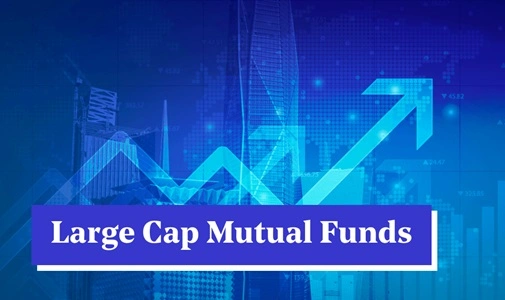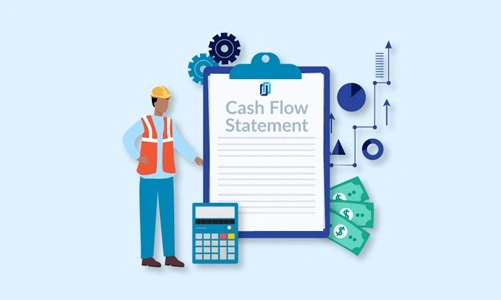Large-cap funds are the most sought-after funds for investors who believe in stability and consistency in their investment portfolios. Choosing the right large-cap fund can ensure a balance in your portfolio with a considerably high return.
Large-cap equity funds experienced an inflow of more than double rupees 3452 crores in October 2024 from rupees 1769 crores in September 2024, as per AMFI (Association of Mutual Funds in India). These data reflect the increase in the confidence of the investors mainly driven by factors like strong SIP contributions and stability of returns. You can counter volatility and balance your portfolio and returns by incorporating a few large-cap funds like Axis Bluechip Fund.
Dimensions of a Large Cap Fund :

The primary portfolio of any large-cap fund consists of stocks of companies which are ranked within the top 100 in market capitalisation by SEBI (Securities and Exchange Board of India). Due to their sheer size and scalability, they are considered more stable and less volatile than mid-caps and small-caps and they have been found to show resilience during economic downturns. The factors you should keep in mind while choosing a large-cap fund are :
1. Consistency in Returns:
Since the composition of these funds majorly consists of stocks from large-cap companies having strong fundamentals and growth prospects, they have the potential to generate steady returns. In fact, you will find 80 % of their asset allocation in large-cap stocks. For instance, Axis Bluechip Fund has an allocation of 88.7% in domestic equities out of which 63.61% is in large-cap stocks. Hence, if you are an investor who is looking for a high return in 4 to 5 years and has the appetite for moderate risk, you should go for a large-cap fund investment.
2. Relatively Lower Risk
To comprehend the risk factors, you need to understand the workings of the mutual funds. These funds are managed by professional fund managers with objectives that align with steady growth and returns.
- Stock Selection: The fund managers identify and choose large-cap companies that have the potential to generate consistent returns over a period of time.
- Risk Management: The fund managers are also responsible for implementing strategies to mitigate risks and volatility for the protection of assets under them.
- Portfolio Creation: Fund managers also diversify the stocks across various sectors and industries to further minimise the risk factors.
The investment objective of the Axis Bluechip Fund states: “The scheme aims to generate long-term capital growth by investing in a diversified portfolio, primarily comprising equity and equity-related instruments of large-cap companies.”
3. Easy Liquidity
Large-cap funds are relatively liquid giving you the freedom to enter and exit the fund easily. The fund managers can adjust portfolios without significantly influencing the stock movements.
4. Performance Measures
To make an informed decision about which large cap to choose, a few aspects need to be scrutinised :
- Analysing the performance by checking their historical track records of return over 1, 3 and 5 years. Check how the fund has managed to generate returns while managing erratic market fluctuations and external factors.
- Considering the expense ratio of a fund can also help you understand relative fund performance in the same category. An expense ratio represents the cost of managing funds in a year. A comparison of this ratio will help you determine whether you are overpaying for a similar return. The balance between return and the cost of fund management is crucial in measuring effective returns.
- Historical returns of any large-cap funds are the most common way to understand their performance metrics and are usually measured by their return on investments. You need to look for positive ROI over one-year or five-year periods in the context of overall market performance.
- Measuring the performance of any market-related instrument is incomplete if the returns are not risk-adjusted. The Sharpe Ratio and Sortino Ratio measure the returns the funds generate relative to the risk taken. A higher ratio signifies a healthy risk-adjusted return.
Investor Perspective
If you are considering investing in a large-cap fund, you should start the process stepwise :
- You should first assess your financial objective and decide on the terms of your investment. You should go for large-cap investment only if you choose to have a long-term investment horizon.
- Evaluate your risk tolerance ability by checking your expenses and lifestyle.
- Use this sector funds to diversify your risk by minimising it without compromising on returns.
- Check the fund management details of a fund. An actively managed fund can even outperform benchmarks due to expert stock selection and better strategies to mitigate volatility.
- Although volatility is under control when you invest in large caps, a periodic review of your portfolio and checking relative fund performances ensures your investments are working towards your financial goals.
Conclusion
Historical performances in large-cap funds underscore their significance in achieving long-term financial goals. With a blend of quality stock selection and strong strategies to manage risks, it assures steady and sustainable growth over a long-term horizon. Though not completely uninfluenced by market ups and downs, these funds still have scalability and financial reliability which is worth a chance to be in any portfolio.
References :
- https://www.angelone.in/news/unveiling-the-best-large-cap-funds-of-the-past-5-years
- https://www.cnbctv18.com/personal-finance/large-cap-mutual-funds-returns-top-performers-list-beat-benchmarks-5-year-inflows-19508764.htm
- https://www.indmoney.com/mutual-funds/equity/large-cap-funds
- https://www.moneycontrol.com/mutual-funds/nav/axis-bluechip-fund-growth/MAA009
- https://economictimes.indiatimes.com/axis-bluechip-fund/mffactsheet/schemeid-10780.cms?from=mdr
- https://www.angelone.in/news/unveiling-the-best-large-cap-funds-of-the-past-5-years#return-on-investment-1

